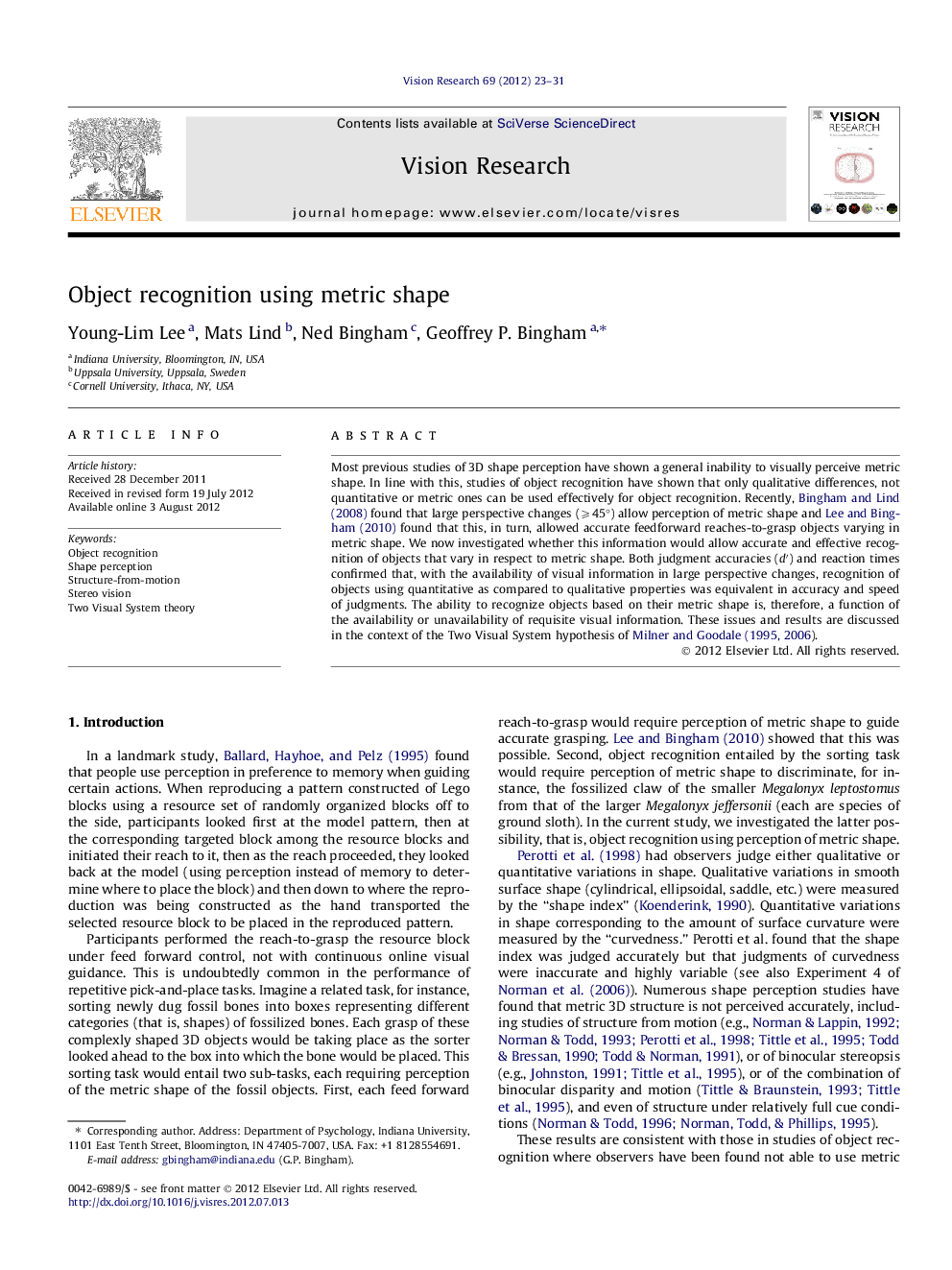| Article ID | Journal | Published Year | Pages | File Type |
|---|---|---|---|---|
| 6203669 | Vision Research | 2012 | 9 Pages |
Most previous studies of 3D shape perception have shown a general inability to visually perceive metric shape. In line with this, studies of object recognition have shown that only qualitative differences, not quantitative or metric ones can be used effectively for object recognition. Recently, Bingham and Lind (2008) found that large perspective changes (⩾45°) allow perception of metric shape and Lee and Bingham (2010) found that this, in turn, allowed accurate feedforward reaches-to-grasp objects varying in metric shape. We now investigated whether this information would allow accurate and effective recognition of objects that vary in respect to metric shape. Both judgment accuracies (dâ²) and reaction times confirmed that, with the availability of visual information in large perspective changes, recognition of objects using quantitative as compared to qualitative properties was equivalent in accuracy and speed of judgments. The ability to recognize objects based on their metric shape is, therefore, a function of the availability or unavailability of requisite visual information. These issues and results are discussed in the context of the Two Visual System hypothesis of Milner and Goodale (1995, 2006).
⺠Is information that allows perception of 3D metric shape used in object recognition? ⺠Recognition was as fast and accurate as when only qualitative properties were used. ⺠A Two Visual System hypothesis that the ventral stream uses metric shape is confirmed.
